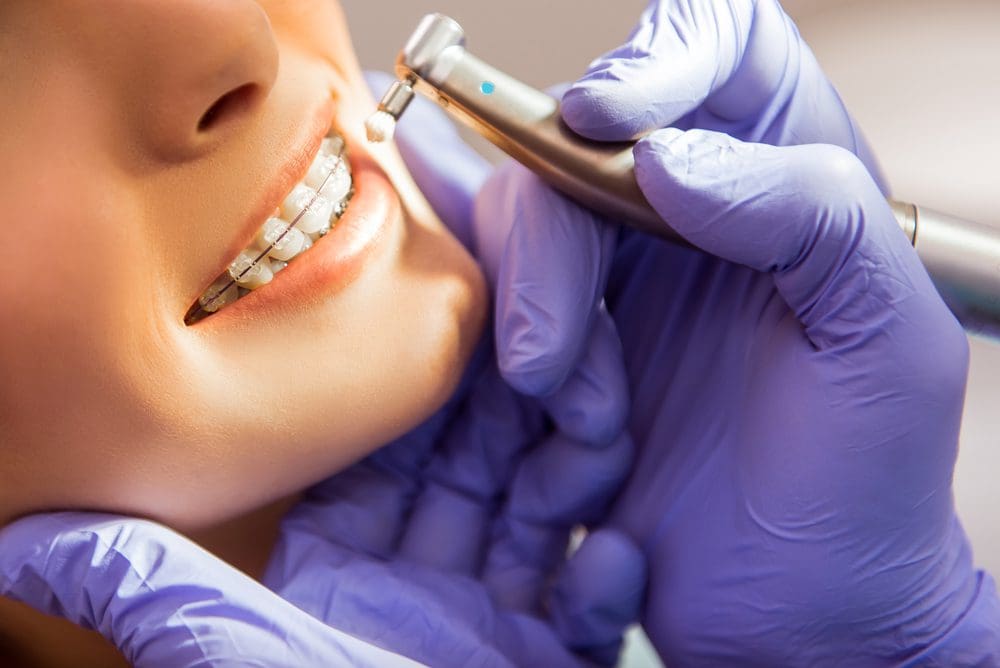Top Tips for Choosing the Best Cumming Orthodontist for Braces and Aligners
Top Tips for Choosing the Best Cumming Orthodontist for Braces and Aligners
Blog Article
Comprehensive Guide to Orthodontics Treatments for Remedying Oral Imbalances
In the realm of orthodontics, the journey to attaining a flawlessly straightened smile entails a myriad of procedures tailored to remedy oral misalignments. From traditional dental braces to unseen aligners and also surgical options, the field of orthodontics supplies a variety of options to attend to varying degrees of oral abnormalities. Understanding the ins and outs of each procedure, including their devices, benefits, and prospective drawbacks, is important in making informed decisions about one's orthodontic therapy. As we browse through the extensive overview to orthodontic procedures for remedying oral misalignments, the complex information of each approach will certainly unravel, clarifying the course towards a harmonious and practical oral placement.
Orthodontic Procedures Overview

Regular modifications and surveillance are critical components of orthodontic therapy to make sure development is on track and to make any type of necessary alterations along the way. By undergoing orthodontic procedures, patients can not just accomplish a straighter grin but also enhance their general oral health and wellness and function.
Standard Braces: Exactly How They Work
When thinking about orthodontic therapies for dental misalignments, standard braces stand out as a tried and true approach for remedying teeth placing. Conventional braces are composed of braces, cables, and bands that function together to apply continual pressure on the teeth, slowly relocating them into the desired positioning.
One trick facet of how standard dental braces work is the procedure of bone makeover. As pressure is related to the teeth through the braces, the bone bordering the teeth is reshaped to support the brand-new tooth settings. This remodeling is vital for the long-term stability of the corrected positioning. Patients will certainly require regular modifications at the orthodontist's workplace to make sure the dental braces proceed to apply the proper stress for efficient teeth movement.
Undetectable Aligners: Disadvantages and pros
These clear, tailor-made trays are practically unnoticeable when put on, making them an attractive option for people looking for an extra visually pleasing orthodontic treatment. People can remove the aligners prior to consuming or brushing their teeth, lowering the threat of food obtaining stuck in the appliance and simplifying the cleansing process.

Surgical Orthodontic Options
Surgical interventions in orthodontics present feasible choices for resolving intricate oral misalignments that might not be efficiently fixed through standard orthodontic treatments. While invisible aligners and typical dental braces can fix many orthodontic problems, specific cases require medical intervention to attain optimum results. Surgical orthodontic alternatives are generally suggested for severe malocclusions, substantial jaw inconsistencies, and situations where the underlying bone framework needs modification to accomplish proper placement.
One usual medical orthodontic procedure is orthognathic have a peek at this website surgical treatment, which includes rearranging the jaws to correct functional issues such as trouble eating or talking. This surgical treatment is commonly done in collaboration with an orthodontist that helps straighten the teeth prior to and after the treatment. Surgical orthodontics might additionally involve treatments to subject influenced teeth, remove excess periodontal cells, or reshape the jawbone to develop an extra unified facial profile.
Prior to considering surgical orthodontic alternatives, individuals undertake an extensive assessment to identify the need and possible benefits of such treatments. cumming aligners. While surgical treatment may seem daunting, it can significantly improve both the pop over here function and appearances of the smile in situations where standard orthodontic treatments drop short
Retainers and Post-Treatment Treatment

Post-treatment treatment includes complying with the orthodontist's guidelines vigilantly. This may consist of correct dental health techniques, going to follow-up consultations, and wearing the retainers as suggested. Failing to adhere to post-treatment care directions can result in regression, where the teeth gradually move back towards their original settings. Regular retainer wear, good dental hygiene, and routine dental examinations are essential for maintaining the outcomes accomplished via orthodontic surgery and ensuring the lasting security of the dealt with dental placement.
Final Thought
To conclude, orthodontic procedures provide different alternatives for remedying oral misalignments. Standard dental braces utilize metal brackets and wires to change teeth into proper positioning. Undetectable aligners provide a more very discreet option but might not be suitable for all situations. Surgical orthodontic alternatives are offered for extra extreme imbalances. Retainers are generally used post-treatment to maintain the new placement. Overall, orthodontic treatments can properly enhance oral health and visual look.
As we navigate via the extensive overview to orthodontic treatments for correcting dental imbalances, the complex information of each technique will unfold, losing light on the course toward a functional and harmonious oral placement. - invisalign
One of the most usual orthodontic treatments is the use of braces, which consist of steel braces and cords that use gentle stress to slowly move teeth into the wanted position.When considering orthodontic treatments for oral imbalances, conventional dental braces stand out as a tried and true method for remedying teeth positioning. Additionally, undetectable aligners might not be suitable for intricate orthodontic issues that find here require more significant teeth activity, as they are usually recommended for light to moderate cases. Retainers are customized orthodontic devices designed to hold teeth in their corrected settings after the conclusion of orthodontic therapy.
Report this page